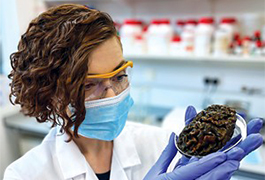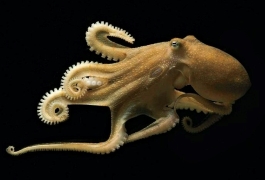2021 Ig Nobel Prizes
by Bethany Halford, for C&EN
Scientists who studied cat chatter, compounds emitted by moviegoers, and the best way to airlift a rhinoceros took home top honors at the 31st Ig Nobel Prize ceremony. The silly and satirical accolades, which honor “achievements that first make people LAUGH, and then THINK,” were awarded virtually on Sept. 9. The magazine Annals of Improbable Research produced the event, and its editor and hero of humor Marc Abrahams served as master of ceremonies.
The coveted Chemistry Prize went to an international team of researchers for their work measuring volatile organic compounds given off by audiences as they watched movies in a theater. The team’s goal was to determine if those chemicals correlated with sex, violence, and other behaviors in the films (PLOS One 2018, DOI: 10.1371/journal.pone.0203044).
There was also an element of chemistry in this year’s Entomology Prize, which was awarded to researchers from the US Navy Disease Vector Ecology and Control Center for their 50-year-old study “A New Method of Cockroach Control on Submarines.” The Navy team used dichlorvos—an organophosphate that was banned in the EU in 1998 because of its toxicity—to get the bugs off subs (J. Econ. Entomol. 1971, DOI: 10.1093/jee/64.5.1196).

Lund University’s Susanne Schötz took home this year’s Biology Prize for numerous studies in which she analyzed how cats communicate with humans via purring, chirping, chattering, trilling, tweedling, murmuring, meowing, moaning, squeaking, hissing, growling, howling, and yowling.
Pavlo Blavatskyy, an economics professor at Montpellier Business School, garnered the Economics Prize “for discovering that the obesity of a country’s politicians may be a good indicator of that country’s corruption” (Econ. Transition Institutional Change 2020, DOI: 10.1111/ecot.12259).

To some, a piece of masticated chewing gum on the street is disgusting litter. To the University of Valencia’s Manuel Porcar and colleagues, it’s a scientific treasure trove. They won the Ecology Prize for using genetic analysis to identify different strains of bacteria found in wads of discarded chewing gum in France, Greece, Singapore, Spain, and Turkey (Sci. Rep. 2020, DOI: 10.1038/s41598-020-73913-4).
Folks prone to stuffy noses might want to reprioritize what’s in their medicine cabinets. Researchers in Germany and the UK won the Medicine Prize “for demonstrating that sexual orgasms can be as effective as decongestant medicines at improving nasal breathing” (Ear, Nose Throat J. 2021, DOI: 10.1177/0145561320981441).
Two Ig Nobels were awarded for that most pedestrian of activities—being a pedestrian. This year’s Physics Prize went to researchers who conducted “experiments to learn why pedestrians do not constantly collide with other pedestrians” (Phys. Rev. E 2018, DOI: 10.1103/PhysRevE.98.062310). And this year’s Kinetics Prize honored researchers who conducted “experiments to learn why pedestrians do sometimes collide with other pedestrians” (Sci. Adv. 2021, DOI: 10.1126/sciadv.abe7758).

University of Utah scientists led by David Carrier were honored with the Ig Nobel Peace Prize “for testing the hypothesis that humans evolved beards to protect themselves from punches to the face” (Integr. Organismal Biol. 2020, DOI: 10.1093/iob/obaa005). Good news for those with full facial fur: the study suggests that a full beard provides protection from damaging strikes to vulnerable facial regions.

And finally, the 2021 Ig Nobel Transportation Prize went to researchers led by Cornell University’s Robin W. Radcliffe for experimentally determining that it is safe to transport an airborne rhinoceros upside down (J. Wildl. Dis. 2021, DOI: 10.7589/2019-08-202).
A recording of the Ig Nobel ceremony will be available at youtube.com/improbableresearch, and National Public Radio’s Science Friday will air an edited recording of the ceremony on Nov. 26, the day after US Thanksgiving.
Please send comments and suggestions to newscripts@acs.org.




